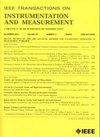Multifault Feature Wasserstein Generative Adversarial Networks for Fault Diagnosis in Unbalanced Data
IF 5.9
2区 工程技术
Q1 ENGINEERING, ELECTRICAL & ELECTRONIC
IEEE Transactions on Instrumentation and Measurement
Pub Date : 2025-06-18
DOI:10.1109/TIM.2025.3580880
引用次数: 0
Abstract
Due to the limitation of industrial conditions in production, raw sensor data are always shown as an unbalanced dataset, characterized by abundant normal operational data and scarce fault instances. This unbalance can degrade the performance of conventional fault diagnosis methods, leading to reduced accuracy and unstable model training. To address this challenge in bearing fault diagnosis, this article proposes a multifault feature Wasserstein generative adversarial network (MFF-WGAN) to enhance diagnostic precision. First, the framework employs a multiencoder denoising autoencoder (DAE) architecture to mitigate noise interference in raw sensor data. Subsequently, the proposed MFF-WGAN integrates label information into its adversarial loss function to enable simultaneous generation of diverse fault categories, while incorporating interclass feature discrepancies to refine sample quality. Finally, the developed multifault feature Wasserstein generation adversarial network is tested on the Case Western Reserve University bearing dataset and the laboratory bearing dataset. Computational results show that the proposed method can generate high-quality bearing samples with multiple faults effectively, which can obtain a higher diagnosis accuracy of 99.01% and 97.71% compared with the existing methods.多故障特征Wasserstein生成对抗网络在非平衡数据中的故障诊断
由于工业生产条件的限制,原始传感器数据通常表现为不平衡数据集,其特征是正常运行数据丰富,故障实例较少。这种不平衡会降低传统故障诊断方法的性能,导致准确率降低和模型训练不稳定。为了解决轴承故障诊断中的这一挑战,本文提出了一种多故障特征Wasserstein生成对抗网络(MFF-WGAN)来提高诊断精度。首先,该框架采用多编码器去噪自编码器(DAE)架构来减轻原始传感器数据中的噪声干扰。随后,提出的MFF-WGAN将标签信息集成到其对抗损失函数中,从而能够同时生成不同的故障类别,同时结合类间特征差异来改进样本质量。最后,在凯斯西储大学轴承数据集和实验室轴承数据集上对开发的多故障特征Wasserstein生成对抗网络进行了测试。计算结果表明,该方法能够有效生成高质量的多故障轴承样本,与现有方法相比,诊断准确率分别达到99.01%和97.71%。
本文章由计算机程序翻译,如有差异,请以英文原文为准。
求助全文
约1分钟内获得全文
求助全文
来源期刊

IEEE Transactions on Instrumentation and Measurement
工程技术-工程:电子与电气
CiteScore
9.00
自引率
23.20%
发文量
1294
审稿时长
3.9 months
期刊介绍:
Papers are sought that address innovative solutions to the development and use of electrical and electronic instruments and equipment to measure, monitor and/or record physical phenomena for the purpose of advancing measurement science, methods, functionality and applications. The scope of these papers may encompass: (1) theory, methodology, and practice of measurement; (2) design, development and evaluation of instrumentation and measurement systems and components used in generating, acquiring, conditioning and processing signals; (3) analysis, representation, display, and preservation of the information obtained from a set of measurements; and (4) scientific and technical support to establishment and maintenance of technical standards in the field of Instrumentation and Measurement.
 求助内容:
求助内容: 应助结果提醒方式:
应助结果提醒方式:


